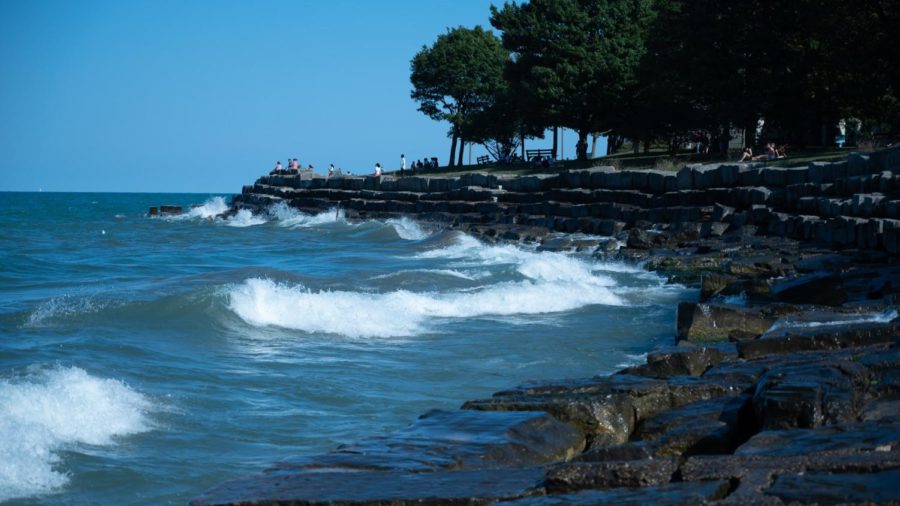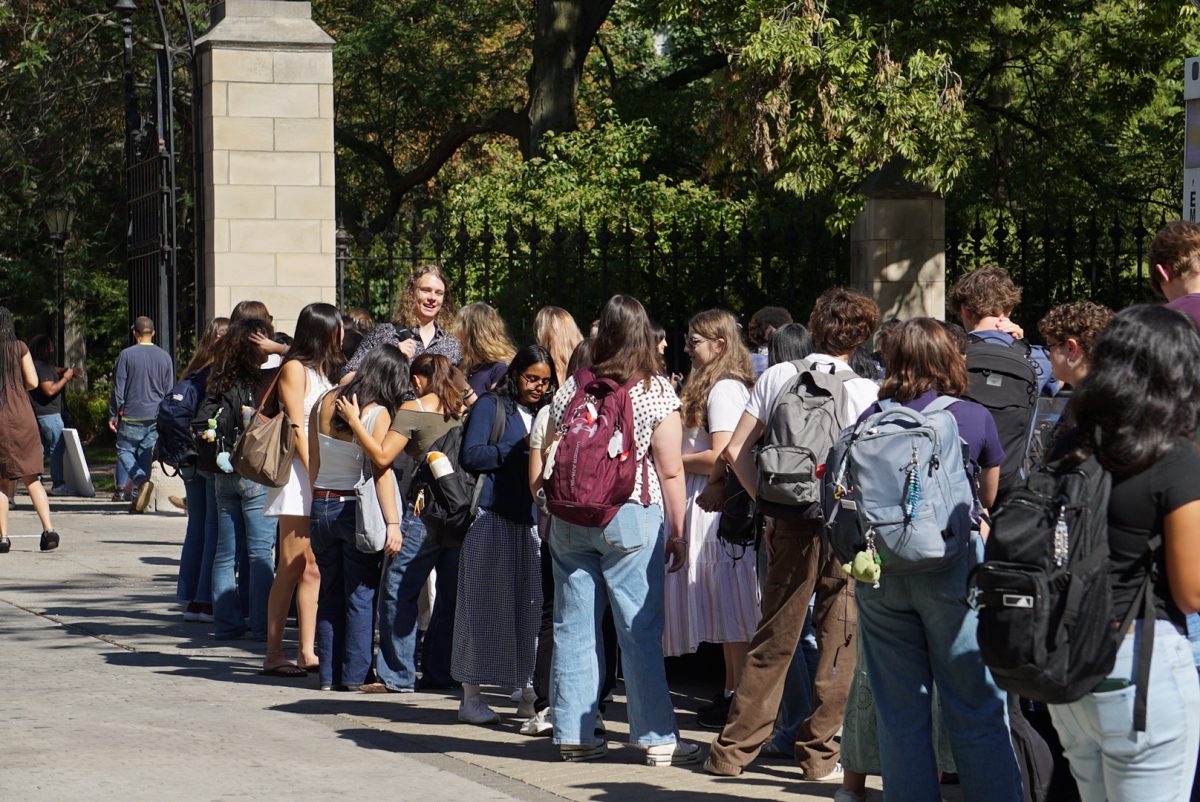The Chicago Park District’s Board of Commissioners voted unanimously on February 15 to “consent to the designation” of Promontory Point, a historic lakefront park, as a Chicago Landmark. This vote reaffirmed the Point’s status as a preliminary landmark, which entitles it to all the legal protections of a Chicago Landmark designation until the final landmark vote before the City Council. If the Point is granted final landmark status, any proposed alterations, demolitions, or construction on or near the Point would be subject to a permit application and review process by the Commission on Chicago Landmarks (CCL).
The Park District’s February 15 vote comes after the CCL voted to grant Promontory Point preliminary landmark status on January 12. These decisions follow nearly 23 years of disagreement between local preservationists and the Park District, which owns Promontory Point, over how to repair the Point’s decaying stepstone revetment. The Park District had previously insisted that replacing the limestone blocks with textured concrete would more effectively control the risk of erosion and storm damage along the lakeshore. The rest of Chicago’s lakefront has already been revetted with textured concrete.
In response, a group called “Save the Point,” which evolved into Promontory Point Conservancy, was launched in 2001 to oppose the Park District’s plan to demolish the Point’s historic limestone.
Jack Spicer, president and founder of Promontory Point Conservancy, told The Maroon in an interview that the preliminary landmark designation by the CCL was “a recognition and an honor.”
“It was a big reward to all the people in the community who have been working so hard for this,” he said. “We’ve been here since 2000, and it’s just now getting recognized citywide just how important the Point is for so many people, for so many different reasons.”
Debra Hammond, treasurer of Promontory Point Conservancy, said that the CCL’s decision was unexpected.
“I was astonished,” Hammond said. “I just assumed that [the Park District and the Chicago Department of Transportation] would veto it hands down.”
According to Spicer, only twice in the last 30 years has a historic site granted preliminary landmark status been denied final landmark status. If the City Council vote passes, the limestone revetment and other historic features of the Point, including the council rings and the David Wallach Fountain, would be protected against demolition or alteration.
“Everyone hangs out on the rocks because the rocks feel good. They’ve got their own contours; each one is a little distinct. It’s a very sensory experience being on the limestone, and I think that’s part of what makes it so gratifying and pleasant for people,” Hammond said.
“Even in the places where the limestone is deteriorating—I mean, what’s wrong with that?” Spicer added. “[Limestone] is beautiful. Concrete is ugly and forbidding.”
According to Ellen Ma, a second-year and a community action project group leader with the Phoenix Sustainability Initiative, the Point would lose some of its character without the limestone steps.
“It’s always relaxing and de-stressing to go to the Point,” she said. “The limestone steps are a great place to sit down and have a picnic. With the concrete, it’s not exactly the same.”
Illinois State Senator Robert Peters, who grew up in Hyde Park, told The Maroon that the limestone is “something special.”
“When the water’s high and it hits concrete, it’s literally just slime and algae. You can’t even stand on it,” Senator Peters said. “To turn the Point into a slip-and-slide because you don’t want to preserve it is ridiculous. The Point is a picturesque, beautiful place. Let’s not ruin it.”
At the January 12 hearing, the Park District affirmed its commitment to preserving the Point’s historic limestone.
“We, along with our partners at CDOT [Chicago Department of Transportation], are committed to saving and reusing as much of the existing limestone as possible,” said Heather Gleason, director of planning and construction at the Park District. She insisted that the Park District takes its “responsibility and obligation to maintain [historic sites] seriously.”
But Spicer suggested that, even with a final landmark designation, there’s “plenty of room for [the Park District] to wiggle out of real preservation.”
“We’re very pleased,” he said, “but we’re also very vigilant here.”
Hammond and Spicer expect the final landmark vote to take place in April, before Alderman Leslie Hairston’s term ends in May. According to Spicer, Hairston “has been supporting [the preservation of the Point’s limestone] from the beginning very strongly.”
“If [repair] is to be done in anything other than limestone,” Hairston said during the January 12 hearing, “it is a no-go for the community.”















